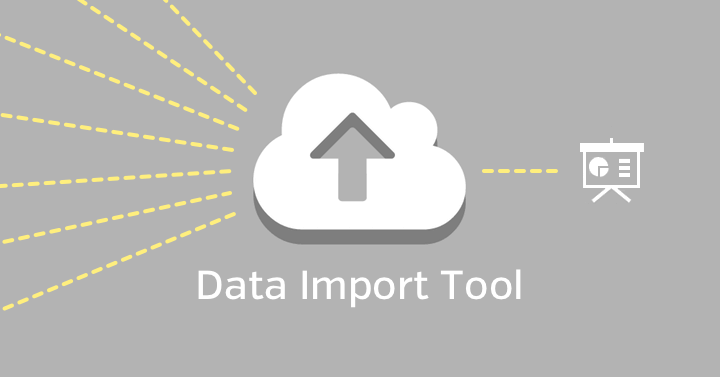In today’s fast-paced industrial landscape, effective maintenance management is crucial for ensuring operational efficiency and minimizing downtime. As organizations strive to enhance their maintenance practices, the deployment of Computerized Maintenance Management Systems (CMMS) has become increasingly prevalent. However, the success of CMMS implementation often hinges on the seamless integration of relevant data. This is where these data tools play a pivotal role.
Simplifying Data Migration Processes
Data importing tools serve as the backbone of CMMS deployment by simplifying the complex process of migrating data from various sources into the system. Whether it’s equipment records, work orders, or inventory data, these tools facilitate the seamless transfer of information, eliminating manual entry errors and saving valuable time. By automating the data migration process, organizations can accelerate deployment while ensuring data accuracy and integrity.
Improving Data Accuracy and Integrity
One of the primary advantages of leveraging these import tools is their ability to enhance data accuracy and integrity within the CMMS. Manual data entry is prone to errors and inconsistencies, which can compromise the reliability of maintenance operations. By automating data import processes, organizations can minimize the risk of human error and ensure that critical information is entered accurately into the system. This not only improves the quality of maintenance data but also enhances decision-making processes.
Enhancing Efficiency through Automation
Automation lies at the heart of data tools, enabling organizations to streamline repetitive tasks and optimize resource utilization. By automating data import processes, organizations can free up valuable time and resources that would otherwise be spent on manual data entry. This allows maintenance teams to focus on more strategic initiatives, such as proactive maintenance planning and equipment optimization. Ultimately, automation enhances operational efficiency and drives productivity across the organization.
Customization for Specific Needs
Another key benefit of these importing tools for data is their ability to be customized to meet the specific needs of an organization. Each organization has unique data structures and requirements, and a one-size-fits-all approach may not suffice. With these importing tools, organizations can define custom mappings and configurations to align incoming data with CMMS fields. This level of customization ensures that the CMMS accurately reflects the organization’s operational realities, enabling more effective maintenance management.
Ensuring Scalability and Flexibility
Scalability is essential for organizations looking to future-proof their deployment with CMMS. As maintenance operations evolve and grow, the ability to accommodate increasing data volumes becomes paramount.These specific tools offer scalability and flexibility, allowing organizations to seamlessly integrate large datasets and adapt to changing business needs. This ensures that the CMMS remains relevant and effective in supporting maintenance operations over the long term.
Maximizing ROI with Tools
Beyond the initial deployment phase, continue to provide value by maximizing return on investment (ROI). By accelerating the deployment process and improving data accuracy, these tools help organizations realize cost savings and operational efficiencies. Moreover, the scalability and customization capabilities of importing data with tools ensure that the CMMS remains agile and adaptable to evolving business requirements, further enhancing ROI over time.
Enhancing Collaboration and Communication
Effective communication and collaboration are essential components of successful maintenance operations. These data tools facilitate seamless communication by centralizing maintenance data within the CMMS. With all relevant information accessible from a single platform, maintenance teams can collaborate more efficiently, share updates, and coordinate tasks effectively. This fosters a culture of transparency and accountability, enabling better decision-making and problem-solving. By enhancing collaboration, data import tools empower organizations to optimize resource allocation and improve overall maintenance outcomes.
Ensuring Compliance and Regulatory Requirements
Compliance with industry regulations and standards is paramount in maintenance management, particularly in highly regulated sectors such as healthcare, manufacturing, and aviation. They play a crucial role in ensuring compliance by accurately capturing and documenting maintenance activities. By automating data import processes, organizations can maintain comprehensive records of equipment inspections, maintenance procedures, and regulatory compliance checks. This not only helps mitigate the risk of non-compliance but also provides auditors and regulatory bodies with transparent access to historical maintenance data.
Leveraging Data Analytics for Insights
In today’s data-driven world, organizations are increasingly leveraging analytics to gain actionable insights and drive informed decision-making. The import tools facilitate the integration of diverse datasets into the CMMS, laying the foundation for advanced data analytics. By consolidating maintenance data from various sources, organizations can perform comprehensive analyses to identify trends, predict equipment failures, and optimize maintenance schedules. This proactive approach enables organizations to prioritize maintenance activities, allocate resources efficiently, and minimize downtime. By harnessing the power of data analytics, organizations can unlock new opportunities for continuous improvement and operational excellence in maintenance management.
Conclusion
Tools to import Data play a crucial role in optimizing CMMS and enhancing maintenance efficiency. By streamlining data migration processes, improving data accuracy, and enabling automation, these tools empower organizations to leverage their CMMS effectively. Moreover, customization capabilities ensure that the CMMS aligns with the organization’s specific needs, while scalability ensures that it can adapt to future challenges. By embracing these data tools as part of their deployment strategy, organizations can drive operational excellence and achieve maintenance management success.



